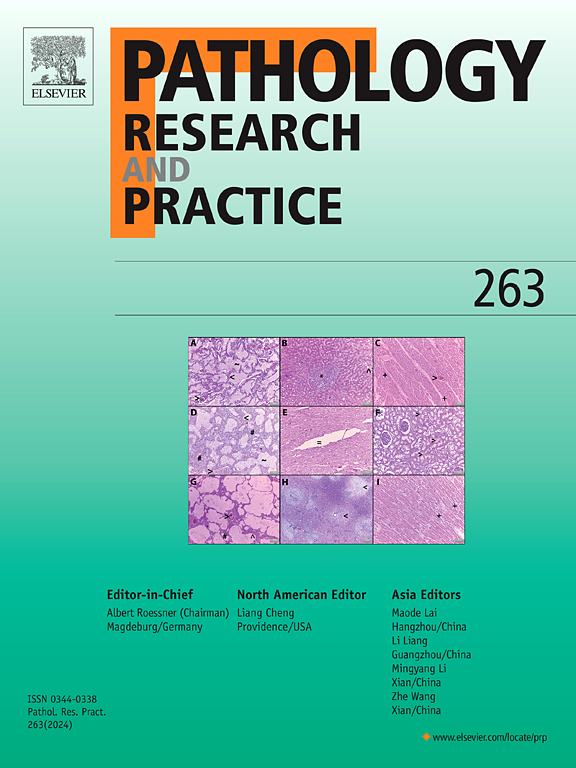FBLN2 inhibits gastric cancer proliferation and metastasis via the TGFβ/TGIF2 pathway
IF 2.9
4区 医学
Q2 PATHOLOGY
引用次数: 0
Abstract
Gastric cancer (GC) ranks among the most common gastrointestinal tumours and is a significant contributor to cancer mortality globally. The proliferation, metastasis, occurrence and development of GC have obvious malignant tendencies. This study is based on our previous studies. Previously, we reported that Fibulin-2 (FBLN2) can inhibit the distant metastasis of GC by promoting lost-nest apoptosis. Despite its clinical importance, the biological function of FBLN2 in GC remains inadequately understood. This study investigated the underlying molecular mechanisms of FBLN2 in the pathogenesis and progression of GC, as well as its impact on the biological behaviour of GC cells. In vivo and in vitro experiments, we demonstrated that FBLN2 overexpression resulted in a reduction in GC cell proliferation and metastasis, whereas its knockdown led to enhancement of GC proliferation and metastasis. Moreover, we used RNA-seq technology to conduct KEGG enrichment analysis of differential genes in wild-type GC cells and FBLN2 knockout GC cells and successfully confirmed that FBLN2 plays a corresponding biological role through the TGFβ/TGIF2 axis. In addition, in terms of the clinical data, we revealed a correlation between FBLN2 and TGIF2 and patient prognosis. In summary, our study revealed that FBLN2 suppressed GC proliferation, migration and invasion by downregulating the TGFβ/TGIF2 axis, suggesting that FBLN2 is a promising target for GC treatment.
求助全文
约1分钟内获得全文
求助全文
来源期刊
CiteScore
5.00
自引率
3.60%
发文量
405
审稿时长
24 days
期刊介绍:
Pathology, Research and Practice provides accessible coverage of the most recent developments across the entire field of pathology: Reviews focus on recent progress in pathology, while Comments look at interesting current problems and at hypotheses for future developments in pathology. Original Papers present novel findings on all aspects of general, anatomic and molecular pathology. Rapid Communications inform readers on preliminary findings that may be relevant for further studies and need to be communicated quickly. Teaching Cases look at new aspects or special diagnostic problems of diseases and at case reports relevant for the pathologist''s practice.

 求助内容:
求助内容: 应助结果提醒方式:
应助结果提醒方式:


